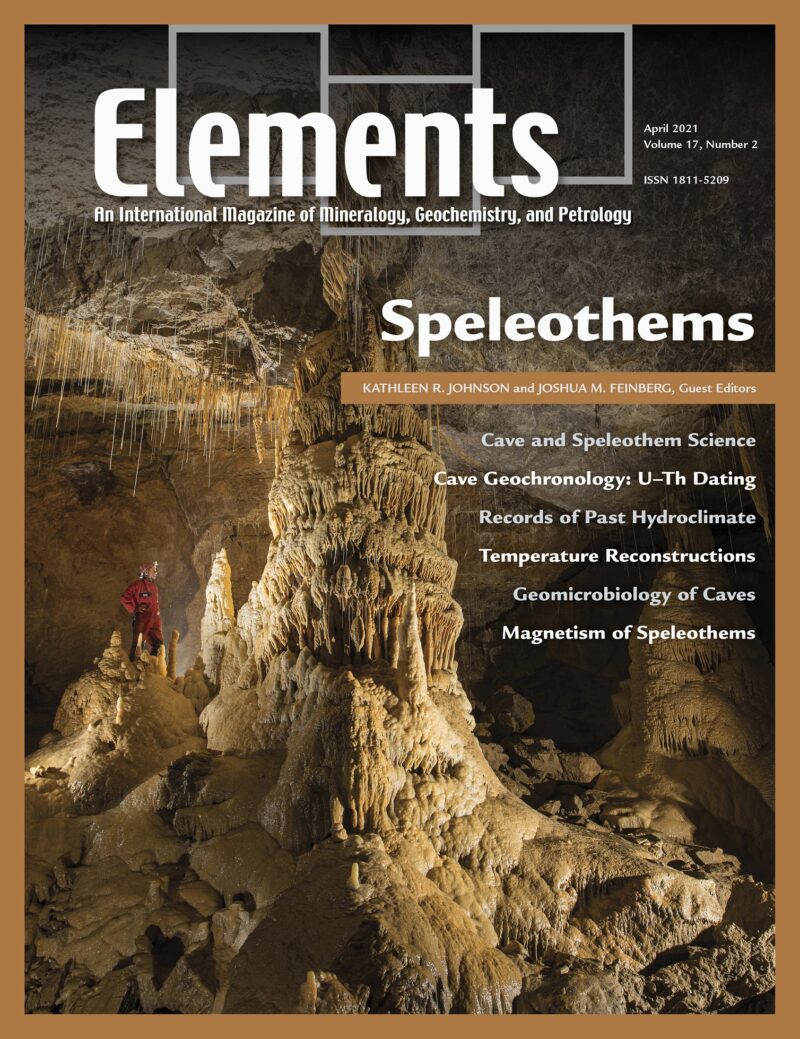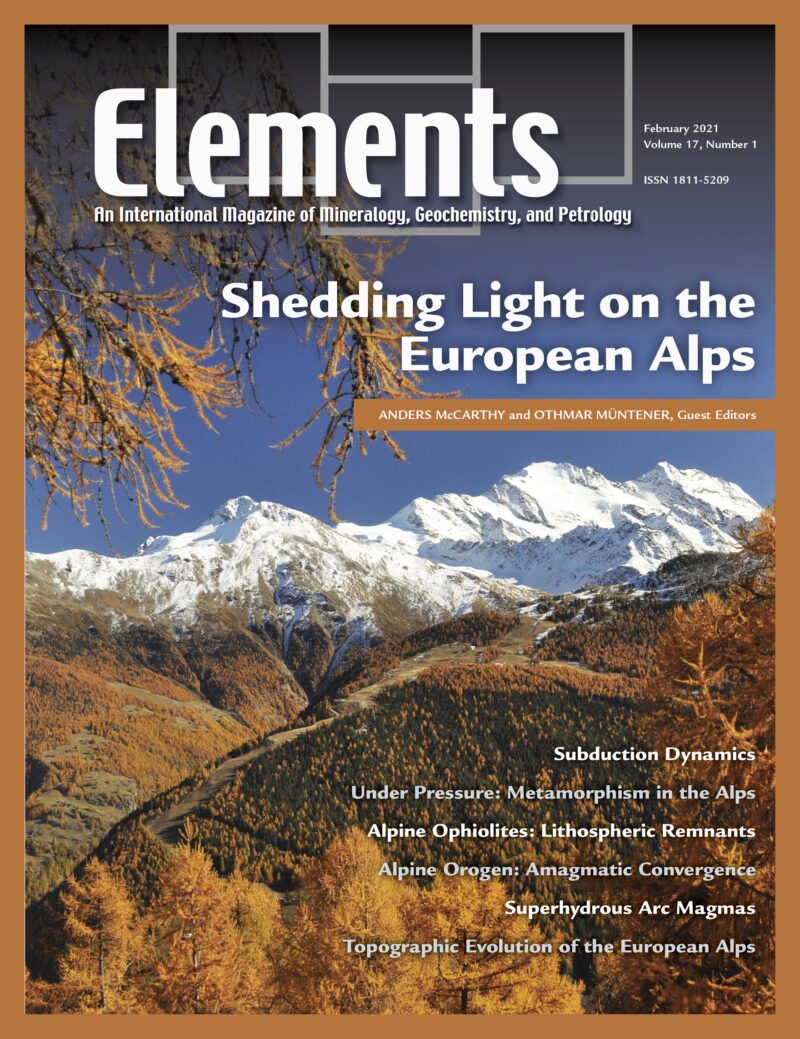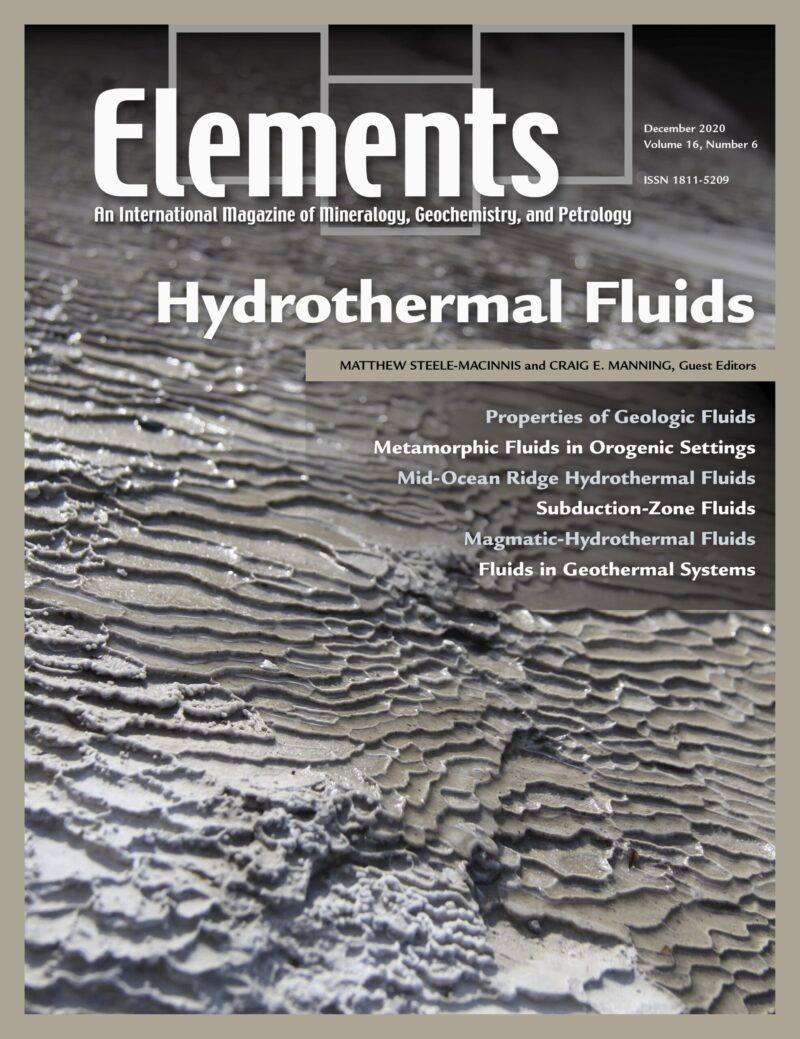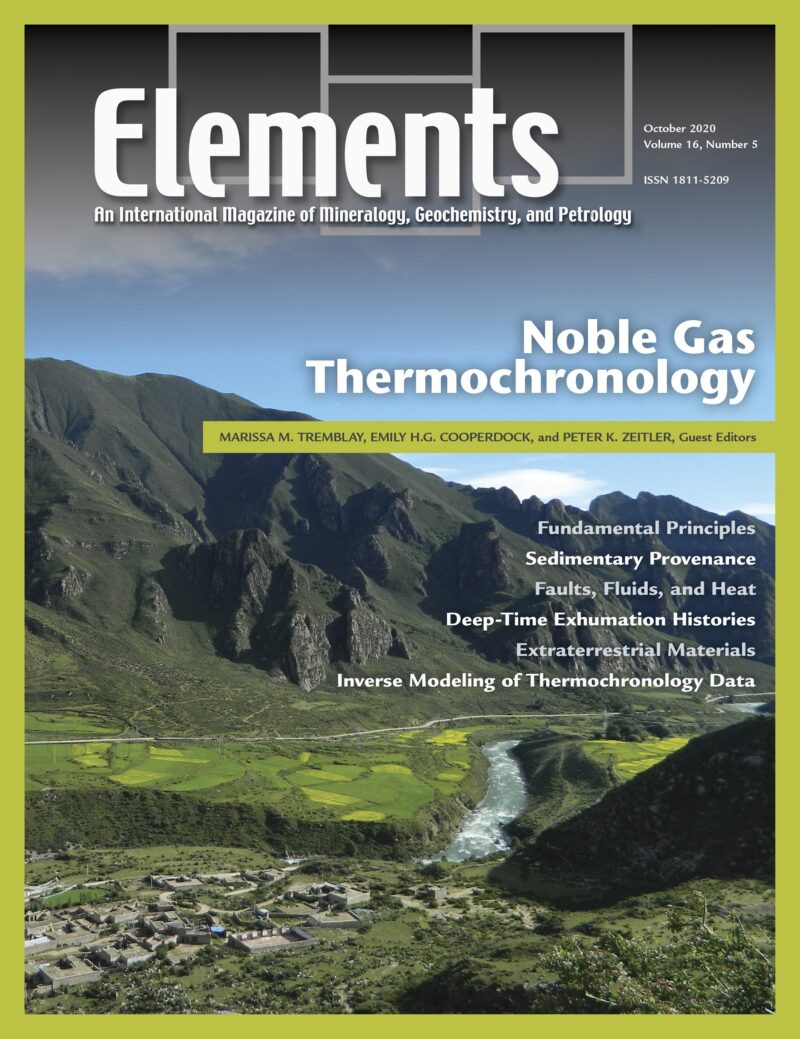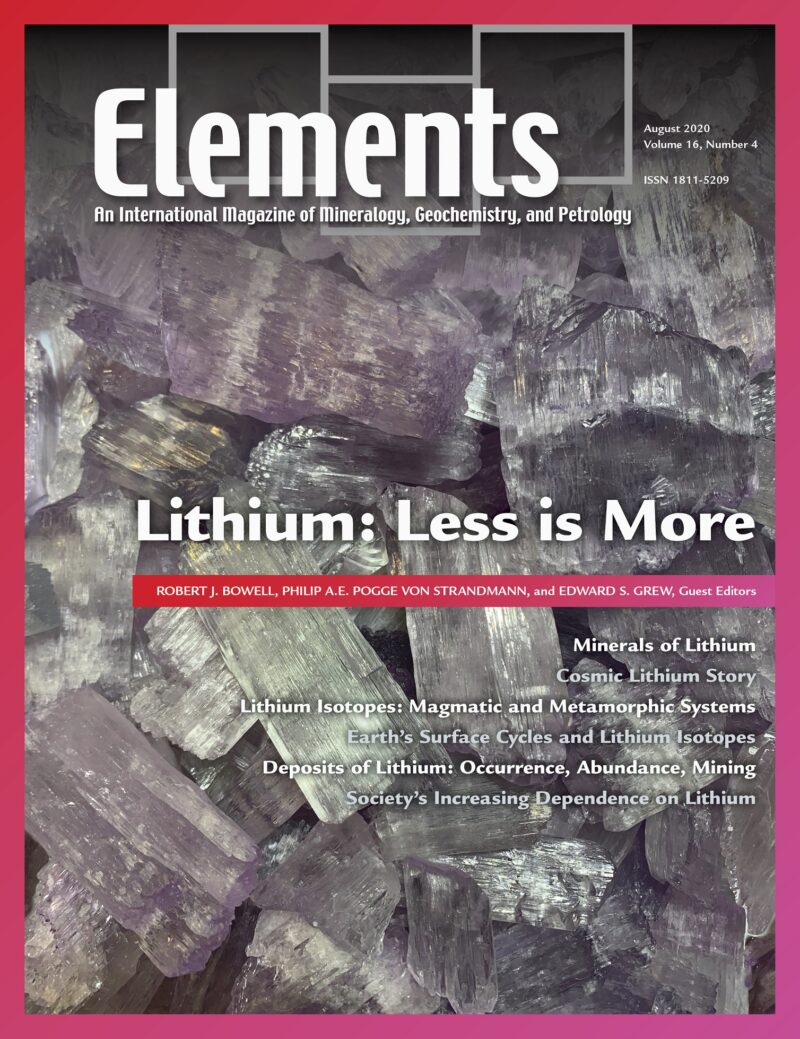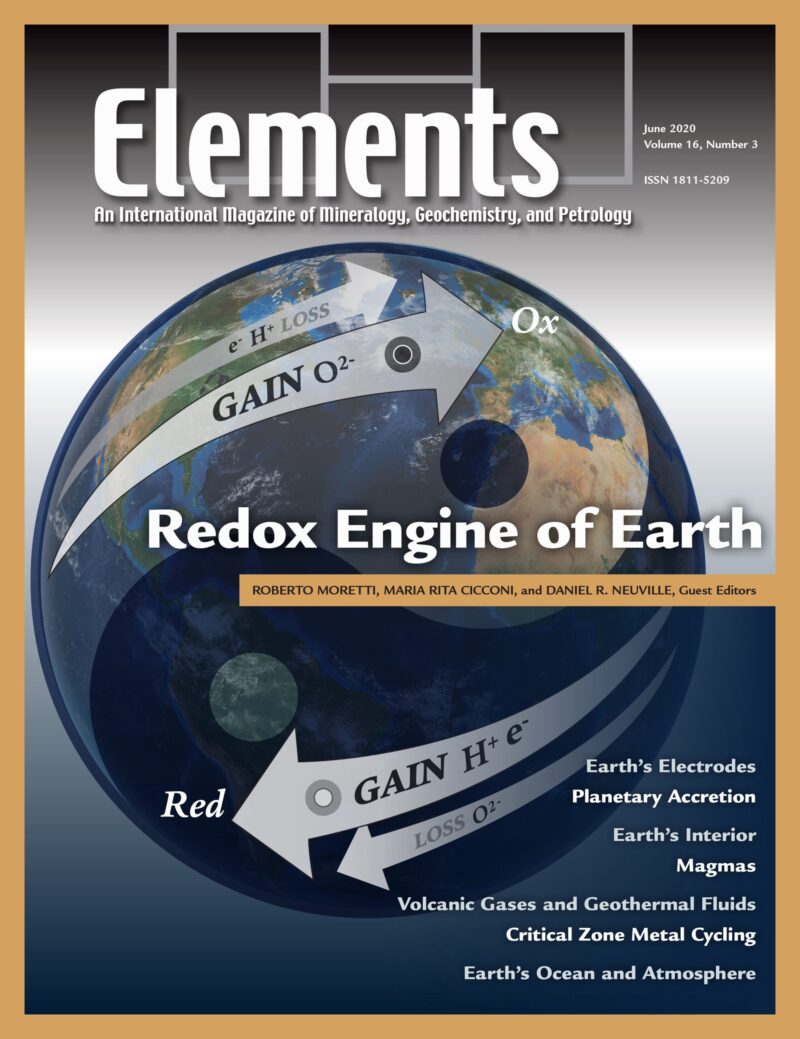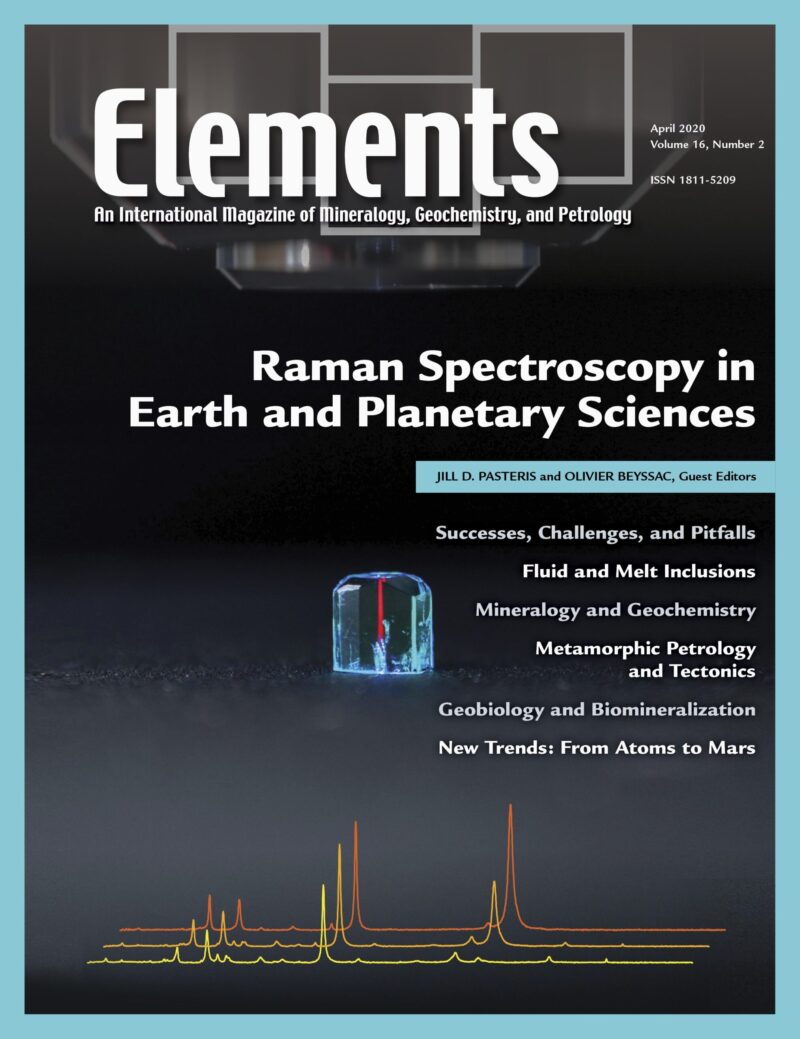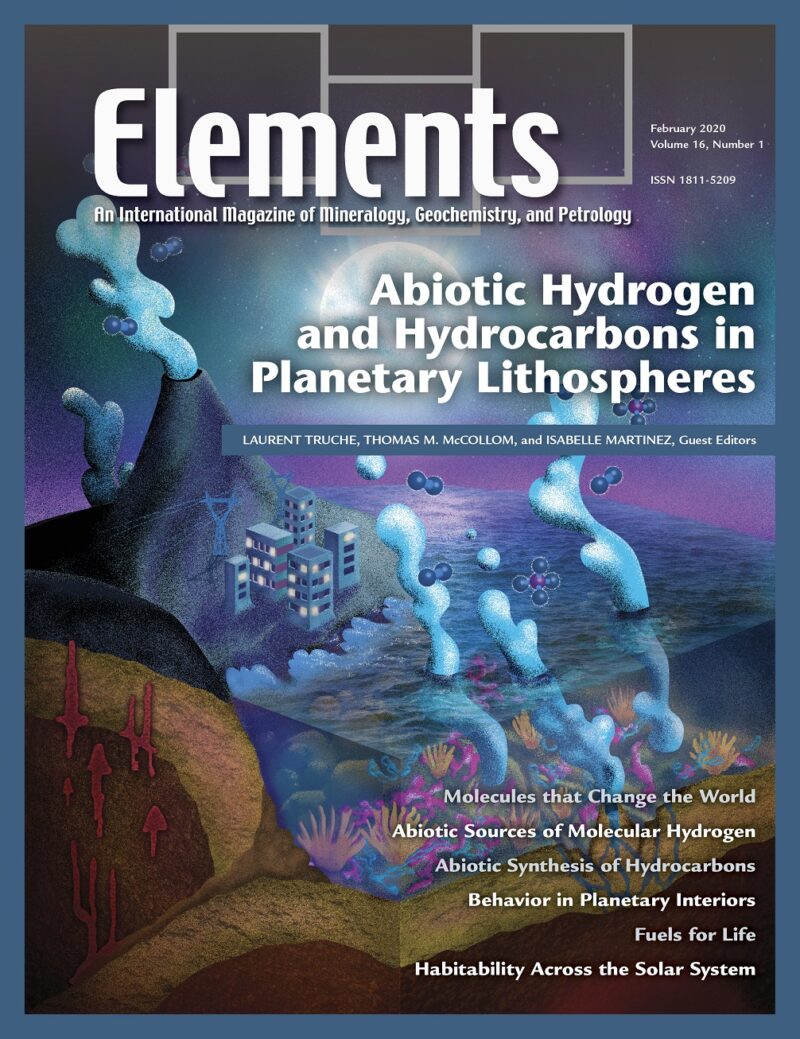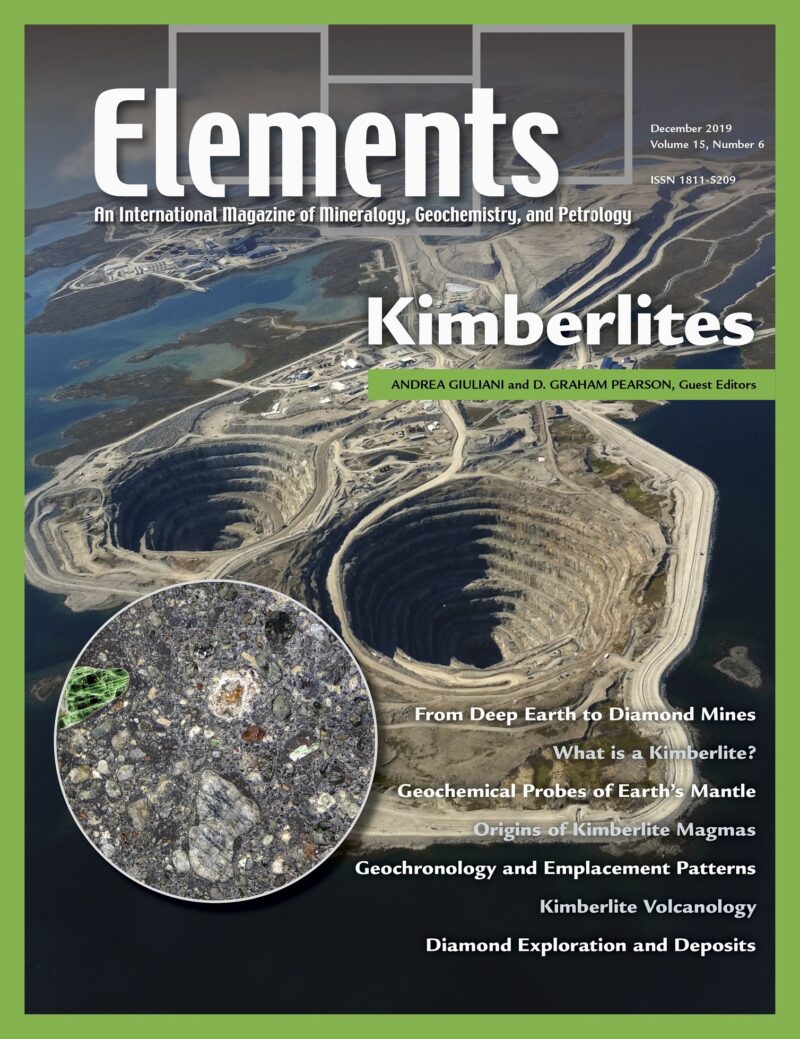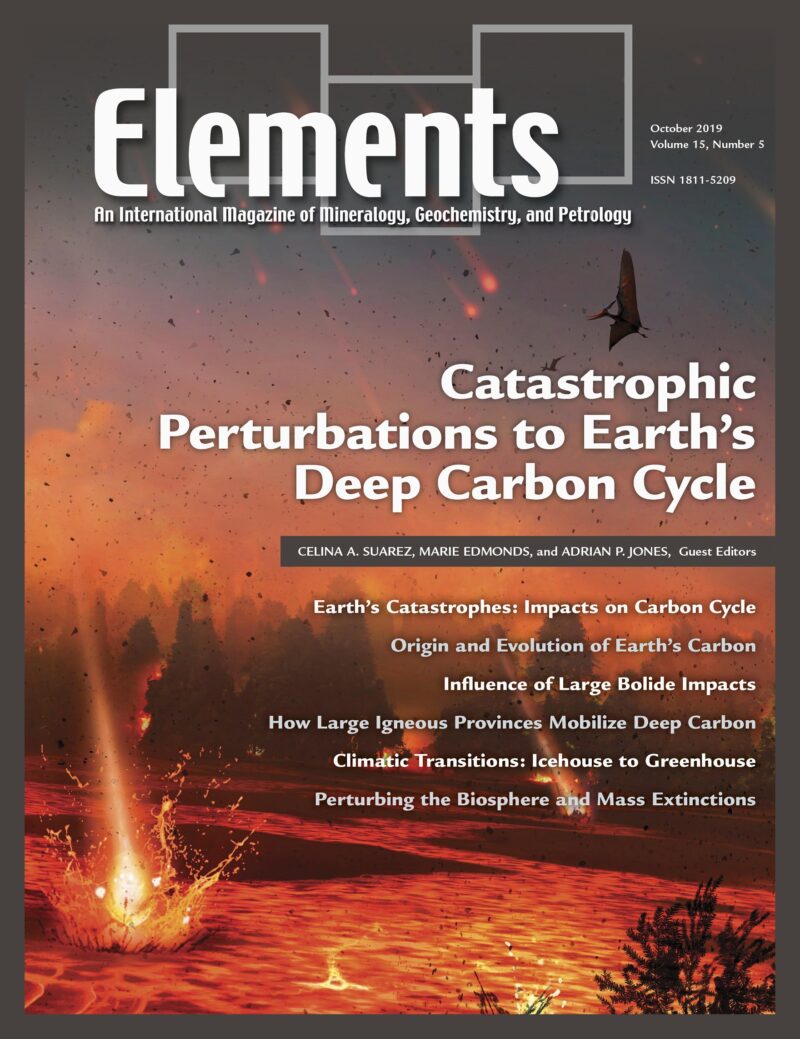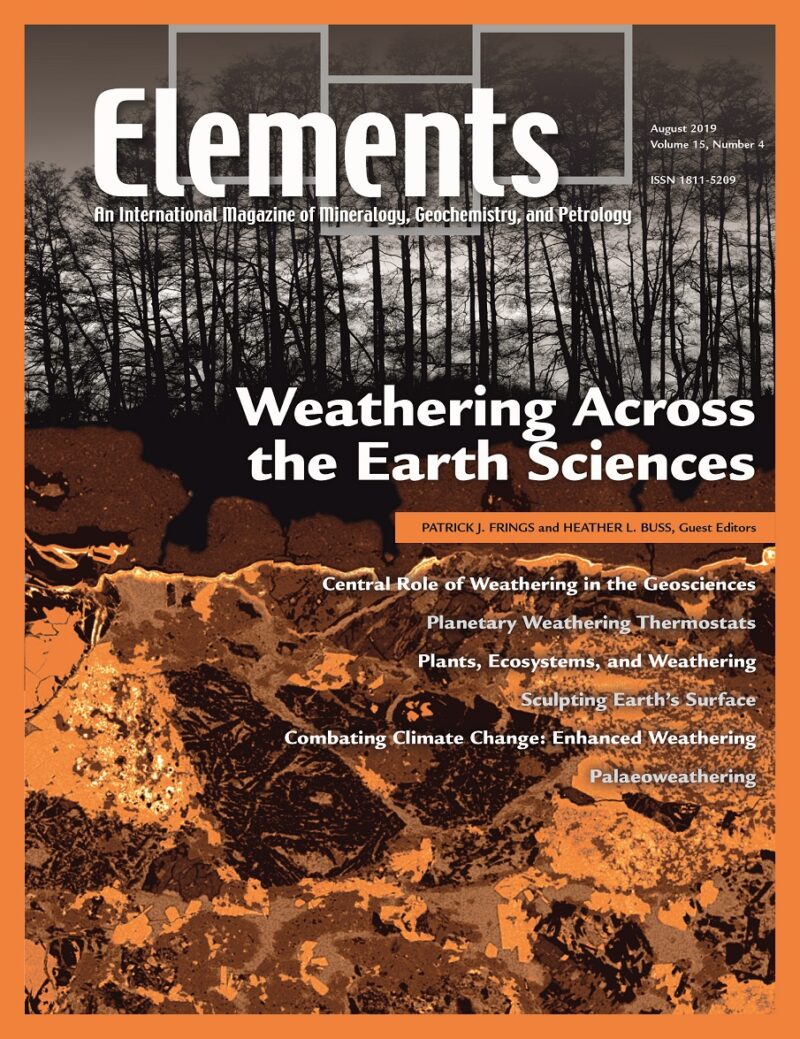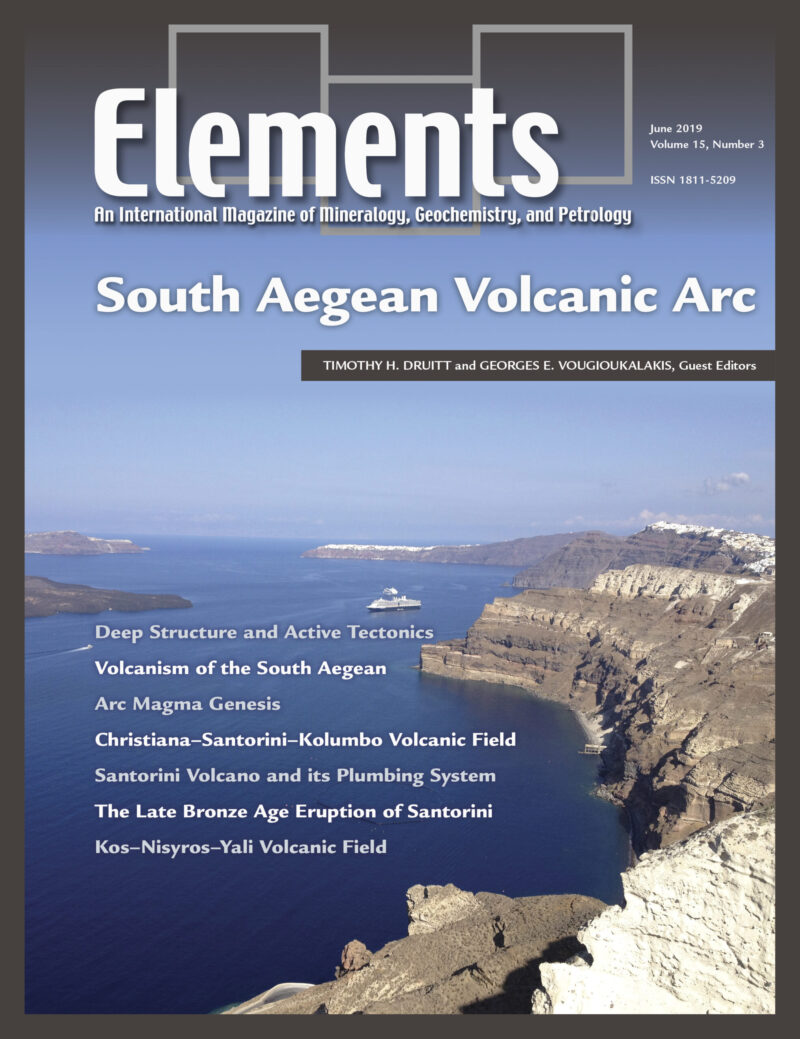-
Speleothems, April 2021, Vol. 17, No. 2
$20.00Growing slowly drip by drip through the millennia, stalagmites, stalactites, and flowstone—collectively known as speleothems—are some of the most fantastic mineral features in nature. Speleothems are also critical archives of past environments, and their study incorporates expertise from groundwater hydrogeology and geochemistry, atmospheric chemistry, climate science, geobiology, and even geophysics.
-
Shedding Light On The European Alps, February 2021, Vol. 17, No. 1
$20.00The European Alps are one of the most studied orogens in the world. Research over last 30 years is forcing us to rethink our understanding of Alpine evolution: new concepts have emerged that question long-established paradigms.
-
Hydrothermal Fluids, December 2020, Vol. 16, No. 6
$20.00Fluids are one of the principal agents of heat and mass transfer in the Earth. This thematic issue explores the physical and chemical properties of hydrothermal fluids and how they affect geologic processes.
-
Noble Gas Thermochronology, October 2020, Vol. 16, No. 5
$20.00Noble-gas thermochronology takes advantage of the time-dependent production of noble gases and the thermally activated diffusion of these gases to constrain the temperature histories of minerals found in crustal rocks. Thermochronology has become widely used to address research questions across Earth and planetary science.
-
Lithium: Less Is More, August 2020, Vol. 16, No. 4
$20.00Lithium is concentrated in Earth’s upper continental crust and is an essential constituent of 122 mineral species with the greatest mineralogical diversity found in pegmatites. Lithium occurs naturally in two isotopes, 6Li and 7Li, which are readily fractionated, thus becoming sensitive to geological and environmental processes.
-
The Redox Engine Of Earth, June 2020, Vol. 16, No. 3
$20.00The redox state is one of the master variables that drove the formation of the Earth and that now also controls life processes. From the dawn of geochemistry, a knowledge of redox states has been essential to understanding the compositional makeup of our planet and the fundamental processes that occur in any natural chemical system, from the core to the atmosphere, from magmatic systems to aquatic systems.
-
Raman Spectroscopy In The Earth And Planetary Sciences, April 2020, Vol. 16, No. 2
$20.00The application of Raman (microprobe) spectroscopy in the geosciences has rapidly broadened and deepened over the past 40 years. This has been sparked by both improvements in technology and recognition of the quantitative, as well as qualitative, capabilities of the technique.
-
Abiotic Hydrogen And Hydrocarbons In Planetary Lithospheres, February 2020, Vol. 16, No. 1
$20.00Molecular hydrogen (H2), methane, and hydrocarbons with an apparent abiotic origin have been observed in a variety of geologic settings, including serpentinized ultramafic rocks, submarine hydrothermal vents, and deep fractures within ancient cratons. Recent discoveries have reported the presence of hydrogen emanating from the icy crust of Saturn’s moon Enceladus, and methane in the atmosphere of Mars.
-
Kimberlites, December 2019, Vol. 15, No. 6
$20.00Kimberlites are the most deeply derived of all volcanic rocks, as well as the host rock for most of the world’s diamond mines. Kimberlites, therefore, provide unique snap-shots of magma genesis and mantle evolution in the deep Earth well into the diamond stability field (>150 km and, potentially, >700 km).
-
Catastrophic Pertubations To Earth’s Deep Carbon Cycle, October 2019, Vol. 15, No. 5
$20.00Carbon is one of the most important elements on Earth. It is the basis of all life on the planet, is stored and mobilized throughout the Earth from core to crust, and is the basis of the energy sources that are so important to human civilization.
-
Weathering Across The Earth Sciences, August 2019, Vol. 15, No. 4
$20.00This issue highlights the integral role of weathering processes across a range of geoscience fields. Chemical weathering – the loss of mass by mineral dissolution and export – is key to understanding how Earth’s skin functions.
-
South Aegean Volcanic Arc, June 2019, Vol. 15, No. 3
$20.00The South Aegean Volcanic Arc lies at the intersection between Europe, Asia, and Africa, in the cradle of European civilization. Studies over the last decade have transformed our understanding of the arc: subduction architecture and back-arc geodynamics, genesis of the arc magmas, eruption chronology of the arc recorded in marine tephra archives, and hazards posed by eruptions and tsunamis.

